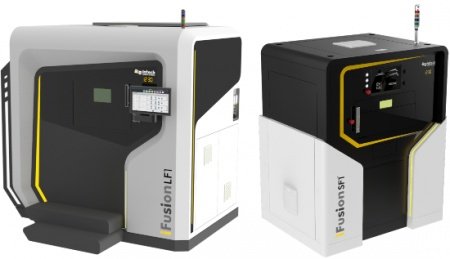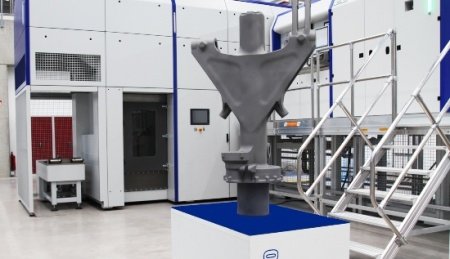New Opportunities For Aerospace With DED 3D Printing Technology
5-axis DED 3D printing is opening new possibilities and finding its own niche in the manufacturing industries. ModuleWorks deep dives into its software technology and the applications.
Directed Energy Deposition (DED) refers to any additive manufacturing process that uses a focused energy source, such as a plasma arc, laser or electron beam to melt and deposit material from a nozzle onto a surface.
5-axis DED technology is opening new possibilities and finding its own niche in the manufacturing industries. The aerospace industry, for example, relies on DED for cost-effective repair of moulds and turbine blades, and tool makers use DED for manufacturing and repairing sheet metal forming tools.
Here, ModuleWorks provides an insight into the software technology (toolpath generation, simulation and post processing) that is making DED an increasingly attractive manufacturing option and shares how the technology opens new production possibilities.
Understanding the Software Technology
Multi-Axis Tool Path Generation
Like other CAM techniques, DED uses sophisticated tool path calculation algorithms to generate efficient, collision-free machining operations from the initial CAD or mesh data. Taking a free-form machining surface as input, the volume is generated and divided into 3D slices according to the desired layer thickness. Tool paths within the layers are generated using path patterns which can be defined by path curves, intersections of guide surfaces or by automatically generated center axes.
Propagation of the weld pool layers can be controlled by various sorting parameters. Further parameters optimise the tool path accuracy, point distribution and orientation of the laser head [CIRP Vol. 68/1, 2019, pp. 447 – 450]. The combination of the individual additive paths and the layers is automatically collision-free.
Additional features assist operators with both complex and everyday manufacturing tasks:
- Path planning on scanned data
- Orientation along wall structures to print areas with large overhangs
- Fixed 6th axis to keep the orientation of the nozzle in the direction of movement for WAAM applications
- Buildup of arbitrary curved shapes such as tube geometries
DED tool path generation software combines these features and takes the operator-defined parameters to automatically generate an additive toolpath optimised for DED manufacturing.
Multi-Axis Additive Simulation
Machine simulation is essential for catching collisions and other potential machining problems that would otherwise halt production and require operators to adjust the machining process (e.g. to redefine the workpiece zero point or reset the machine modules). Using an integrated machine simulation prevents this expensive downtime by detecting and avoiding collisions before they occur. Collisions between the part and print head, as well as printing errors, can be predicted and avoided.
DED simulation allows operators to define the shape of the tool (powder nozzle, laser) for each simulation job, and the operator-defined test points ensure a robust in-process model for the machine simulation which can be used for subsequent simulation steps. The simulation also checks for collisions between machine components, clamping devices and the in-process state of the workpiece.
To continue reading this article, head on over to our Ebook!
For other exclusive articles, visit www.equipment-news.com.
WANT MORE INSIDER NEWS? SUBSCRIBE TO OUR DIGITAL MAGAZINE NOW!
FOLLOW US ON: LinkedIn, Facebook, Twitter










